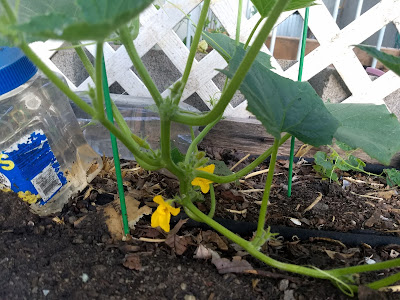Over the last several years I have grown the Taxi tomato. The majority of the time I have grown it, I have had some form of success. The very first year I had my garden, I grew a whole lot of them. The following year or two I grew less of them outside of the garden. But last year, I decided I would grow primarily Taxi tomatoes in the area in which I had been growing my sweet potatoes.
Tomatoes
generally don’t do well being grown in the same place year after year.
The plants often draw a large amount of fertility, nutrients and other
good things from the soil. Additionally, fungus, bacteria, viruses and
other disease issues that can build up in the plants can sometimes make
their way into the roots and the soil.
In
2019, my children splashed chlorinated water over the sides of the
pool, which killed the healthy bacteria that supported the roots of the
plants, which quickly led to their demise. Likewise, at the beginning of
the 2020 gardening season highly chlorinated water was splashed all
over my Taxi tomato plants, which quickly began to decline. I decided to
experiment by spraying some Serenade (Bacillus subtilis strain QST 713)
onto the plants. Within a matter of days, the plants not only rebounded
from the injury caused by the chlorine, but were doing much better than
they were doing prior to having the bacteria stripped from the soil. So
– this is how I had a good crop of Taxi tomatoes. Every 2-3 weeks, the
plants would decline enough to require spraying again and each time I
sprayed, the plants did better. Spraying like this turned this
determinate tomato variety into something that was much more
semi-determinate in nature.
The
vines continued to grow strong through several flushes of tomatoes
until the plants, though still free of disease, looked used up enough
that I decided to pull them. This is always a hard decision to make:
when to pull the plant? My decision point for pulling a plant is when
the plant begins to decline to the point at which leaving it in the soil
would be detrimental to the health of the garden. For me, tomatoes
usually reach this point immediately after their first fruit is formed
(one of the many reasons I prefer growing determinate tomatoes). Most
years I would have pulled the plant much earlier, but this year I
decided to pull it later because the plant’s health was still so good.
So
altogether this was a fantastic year for growing out the Taxi tomato. I
enjoyed a good harvest - and the plants were healthy enough that the
negative effects of their presence in that spot were mostly mitigated by
the bacterial fungicide I used to maintain them. Unlike previous years,
I can gladly say that – at least in relation to growing out my Taxi
Tomatoes – that I wouldn’t change a thing.




























































